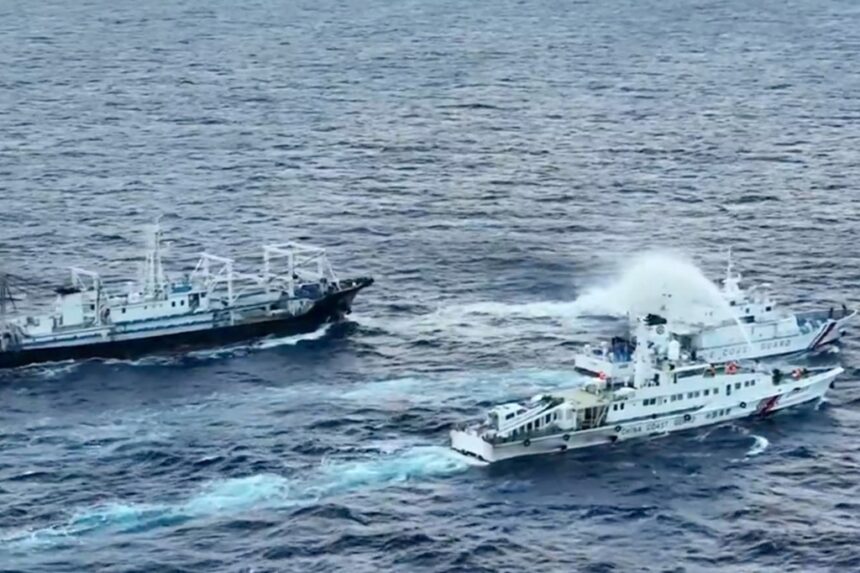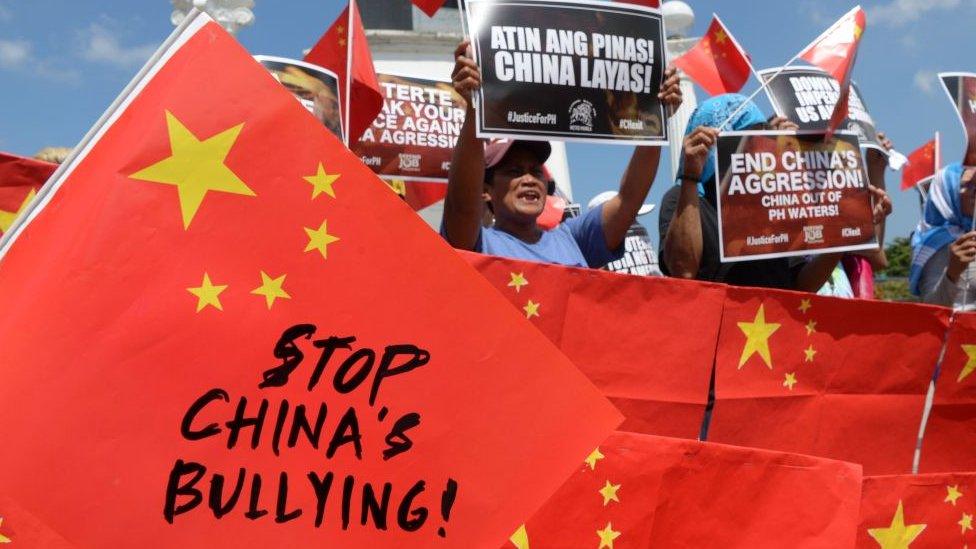BEIJING – China’s Foreign Ministry spokesperson Mao Ning on Friday shifted blame onto the Philippines for a maritime clash in the South China Sea. This came after a Chinese Coast Guard ship was captured on video ramming and spraying water cannons at a Philippine fisheries vessel near Sandy Cay.
The incident, which happened on Wednesday, 21 May 2025, left the Philippine boat badly damaged and put its crew in danger, according to the Philippines’ Bureau of Fisheries.
Despite these facts, Beijing claimed the Philippines provoked the conflict, a stance that goes against clear video evidence and highlights a pattern where China denies its aggressive behaviour in disputed waters.
Footage released by the Philippine Coast Guard shows a Chinese Coast Guard ship using high-pressure water cannons on a Philippine fisheries vessel carrying out research near Sandy Cay. This is about 140 miles from Luzon and nearly 700 miles from Hainan.
After spraying the boat, the Chinese vessel sideswiped it, causing damage and risking the safety of those on board. Commodore Jay Tarriela of the Philippine Coast Guard called the actions “unlawful aggression” and pointed out they violated international maritime law, saying China’s approach was not standard law enforcement.
Meanwhile, in Beijing, Mao Ning told reporters that the Philippine boat “suddenly changed course” and “deliberately collided” with the Chinese vessel. Chinese state media repeated this story, calling the Philippine footage “staged” and accusing Manila of stirring up trouble to hurt China’s reputation. This version of events is hard to believe when set against the video evidence and China’s record in the region.
China Repeatedly Shifts in Blame
Beijing’s claims against the Philippines are part of a wider approach that seeks to justify its strong tactics in the South China Sea. China’s Foreign Ministry regularly describes moves like ramming, blockading, and setting up floating barriers as legitimate ways to assert its “indisputable sovereignty.”
Yet, these arguments don’t stand up to scrutiny. A 2016 ruling from an international court, which China rejects, dismissed Beijing’s historical claims and confirmed that the Philippines and other countries have rights to their Exclusive Economic Zones under the United Nations Convention on the Law of the Sea (UNCLOS).
China’s actions do not match its claims of peaceful cooperation. Since early 2024, the Chinese Coast Guard has stepped up its activities, using its largest ships—including the 12,000-ton “monster ship” CCG-5901—to intimidate Filipino fishers and block Philippine patrols within the Philippines’ recognized waters.
In January 2025, Philippine officials accused China of trying to make its presence near Scarborough Shoal seem routine, even though China seized the area in 2012.
In December 2024, Chinese vessels again used water cannons and sideswiped a Philippine patrol boat, drawing criticism from the United States, which called these moves “dangerous” and “unlawful.”
Wider Impact in the Region
The South China Sea is a key shipping route, with about $3 trillion in trade passing through each year. China’s repeated use of force raises the risk of wider conflict. Under President Ferdinand Marcos Jr., the Philippines has stood firm against China’s moves, backed by a 70-year-old defence pact with the United States.
The US has sent Coast Guard ships to join patrols with the Philippines, showing it is serious about standing up to China’s actions. In February 2025, joint air patrols by the US and the Philippines led to more complaints from Beijing, which accused both countries of raising tensions, even as China continued its aggressive actions.
China’s effort to blame the Sandy Cay incident on the Philippines is a clear attempt to avoid responsibility for ongoing pressure in the South China Sea. By casting itself as the victim, Beijing tries to weaken the Philippines’ lawful claims and rally its public behind its aims. But the evidence—videos, international criticism, and the 2016 legal ruling—reveals these claims as empty excuses for control.
With tensions on the rise, other countries need to press China to stop these actions. The Philippines, though smaller in size and strength, continues to stand up for its rights. Ongoing talks between Manila and Beijing may offer a chance to lower tensions, but China’s repeated use of force keeps the risk of conflict high in the region.















